How to Hear a Podcast Again on Eib Rush
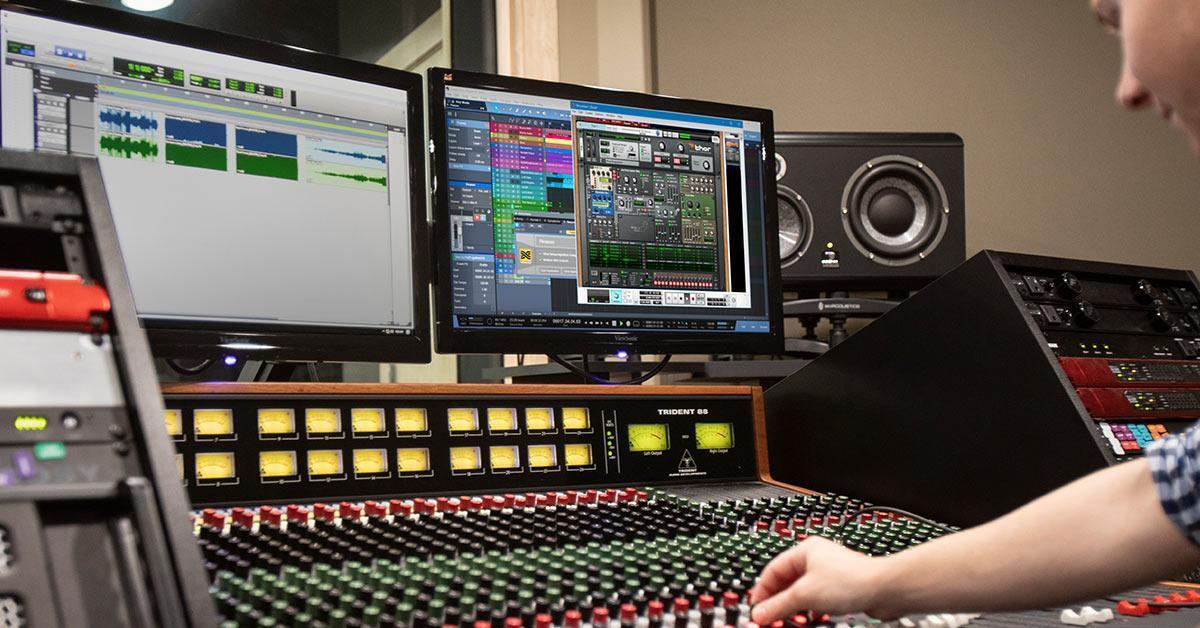
ReWire is a protocol that (among its other talents) allows ii DAWs to be used together, so they human activity like ane program — essentially, an entire DAW can become a plug-in (the ReWire client) for another DAW (the ReWire host). However, a quick glance at forum posts, like the ones below, hints that maybe people don't quite sympathize why ReWire is so useful:
- "I sure wish Pro Tools had Ableton Alive's cool looping and clip launch features, but I'one thousand not about to switch over to a dissimilar DAW."
- "I'm and so happy Acrid Pro is back, and that Magix included some "plug and play" instruments — if only information technology had some fabulous synths and drum computers."
- "Ableton Live is great, just I really need to exist able to work with notation, too. Maybe someday…"
Even so there are solutions for all those issues:
- ReWire Ableton Live into Pro Tools.
- ReWire Propellerhead Reason into Magix ACID Pro.
- ReWire PreSonus Notion into Ableton Alive.
That'south all at that place is to information technology. For general data on ReWire, cheque out the article Upgrade Your DAW with ReWire. In this commodity, we'll dive into a specific-apply instance — how to ReWire Propellerhead Software'south Reason into PreSonus Studio One. Y'all'll find most other programs implement ReWire perhaps non identically, but similarly.
Every bit to the reason for focusing on Reason, no matter how good your DAW's bundled instruments are, Reason is a worthy addition because of the rich roster of instruments that have been added over the years. It provides an unabridged backline of synth-heavy virtual instruments and effects.
By the way, yous don't need to learn everything about Reason to use it as a ReWire client for a ReWire host. All y'all need to do is send MIDI to Reason's instruments and send the instrument audio outputs to Studio Ane's mixer. Neither is difficult. There are actually several ways to access the tools in ReWire, which is maybe why some people find it disruptive — so we'll embrace only what you need to know to have ReWire practice what you want.
Loading ReWire Instruments
In Studio One, you'll observe the available ReWire clients under Instruments > ReWire. Drag a ReWire device to the Adjust view as you would any other instrument. In the dialog box that appears (fig. 1), you'll have the choice to Allow Tempo/Signature Changes and have Multiple MIDI Outputs (I check both).
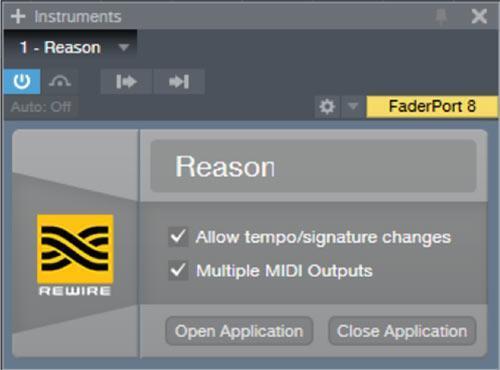
Effigy 1: When y'all insert a ReWire device in Studio One, a dialog box appears.
Then, click on Open Application in the dialog box. With ReWire, you need to open the host before the client, and close the client earlier closing the host.
Using ReWired Instruments
There are two main options.
- Treat the ReWired instruments like whatever other virtual instruments — trigger sounds from a MIDI controller, or notation data in Studio I. As with other virtual instruments, you tin can transform Reason's instruments into audio tracks.
- Generate patterns inside Reason, and record them into sound tracks. For example, maybe you've come up upwardly with a cool ReDrum loop that complements Touch and desire to plough information technology into an sound loop for Studio One.
ReWire adds a slight overlay of complexity to Studio One, considering you demand to decide what workflow is best for you. This can involve a lilliputian caput-scratching, simply one time you lot're set up, it's straightforward.
Of import: Nosotros'll brand a few assumptions.
-
- Y'all've opened Studio One and Reason.
- Yous have a working MIDI controller.
- Yous've loaded the instruments y'all want to use in Reason. For our examples, we'll choose Malström, Thor, and SubTractor. (I created a Reason document specifically for ReWiring that opens with nothing in the rack except the Hardware Interface, with the Audio I/O open up, and Primary Section.)
- Reason's Master Section output goes to Audio I/O audio outputs 1 and 2. This mixes all instruments down to a unmarried stereo output, but nosotros'll discover out how to mix and procedure instruments individually within Studio Ane.
The Simplest Selection: Reason as a Collection of Virtual Instruments
This is simple and easy when you lot want to lay downwards Reason instrument tracks fast — e.g., you lot're in the creative throes of songwriting. It takes reward of the instruments showing up in the MixL+MixR output in Reason, which appears in Studio One when you ReWire Reason into information technology.
| i | Considering dragging Reason into Studio One created an Instrument Track, for the Instrument Runway output cull Reason and the desired musical instrument as the Instrument output (fig. 2). In this instance, it's Malström. |
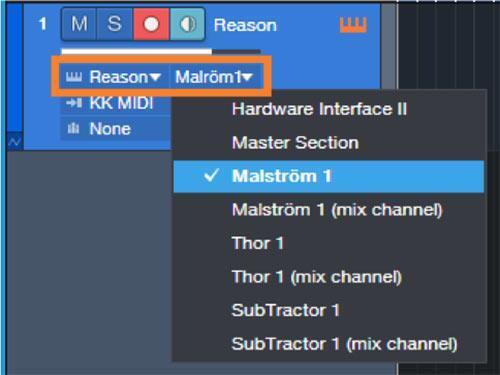
Figure 2: Reason'southward Malström musical instrument has been chosen as the rail output.
| 2 | Also cull the desired MIDI controller equally the Instrument input. In this case, information technology's Native Musical instrument'south Komplete Kontrol keyboard (KK MIDI in fig. 2). |
| 3 | Play your controller, and the rails meter should show activity. |
| 4 | In Reason, click on the associated sequencer track for the virtual instrument you want to hear. This prevents triggering other instruments. |
| five | Record the Instrument runway note data in Studio One. Edit equally desired. |
| 6 | Correct-click on the rail in Studio One'due south Arrange view Runway column, and choose Transform to Sound Runway. Unless you lot're certain y'all won't demand to edit the Musical instrument track at some point, cheque Preserve Instrument Track State. |
| seven | To play a different Reason instrument, insert another Instrument runway in Studio 1. |
| viii | In the new Musical instrument track, cull Reason and the desired instrument every bit the Musical instrument output. |
| 9 | Repeat steps 3 through ix. |
Notation that when you transform an Instrument track to sound, Studio One creates a new mixer channel for the audio output. Besides note that in Footstep half-dozen, you can transform an Musical instrument rails to sound by dragging the notation data into an audio track. Even so, this doesn't mute the Instrument track automatically, and then it will trigger the instrument and y'all'll hear the sound unless you mute the Instrument track. I normally prefer Transform to Audio Track.
Assuming you lot checked Preserve Instrument Rail State, all the Reason instrument sound tracks tin be transformed back into Instrument tracks if yous want to do more editing. To do this, correct-click on the track in the Arranger view track cavalcade, and choose Transform to Instrument Runway.
Using every bit Real-time Virtual Instruments
Now that we have audio tracks, we tin work with them individually. Withal, you may not want to render to audio after recording, but employ Reason'due south instruments every bit real-fourth dimension, virtual instruments. In this context, you might want to automate their parameters, or do other tweaks, prior to transforming them to audio (or just leave them operating virtually).
To practise this, you lot demand to bypass Reason's Master Section and patch the outputs of instruments you want to use to Reason'due south Audio I/O section in the Hardware Interface module. Don't allow the name misfile you; equally far equally Reason is concerned, Studio 1'southward ReWire channels are hardware. Here'south how to patch instruments to Audio I/O.
| 1 | Flip Reason's "rack" around past hitting Tab, and so click on the Audio I/O button (outlined in orange in fig. 3). This reveals 16 available sound outputs, and subsequently inserting the instruments, you can patch the instrument outputs to whatsoever of these. For example, in effigy 3, Malström goes to 1+ii, Thor goes to 3+4, and SubTractor, which has a mono output, goes to output 5. |
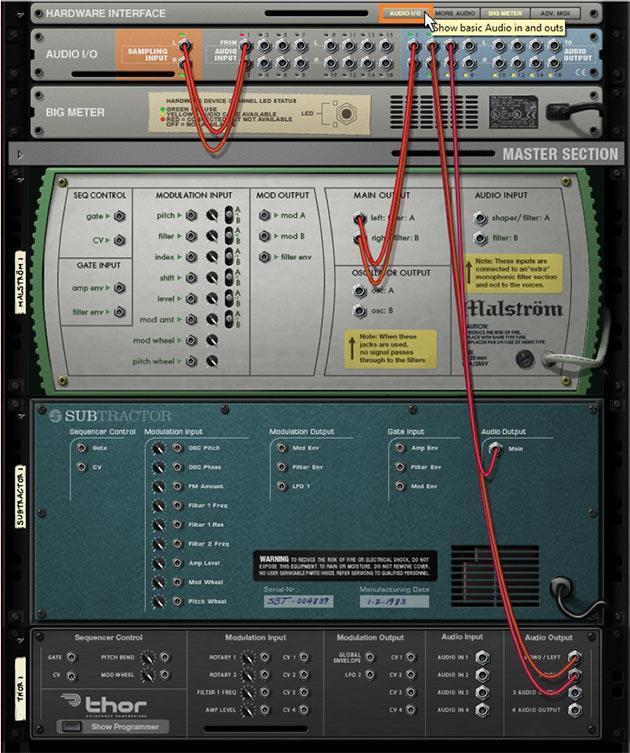
Figure 3: Reason instrument outputs are being routed to the Audio I/O section.
| ii | In Studio Ane's Instruments panel, under Reason, cheque all the channels you lot want to employ — in this instance MixL+MixR (which are Channels ane and 2), Channels 3 and four for Thor, and Aqueduct 5 for SubTractor, which has a mono output. Now all these outputs volition be available in Studio One's mixer (fig. 4). |
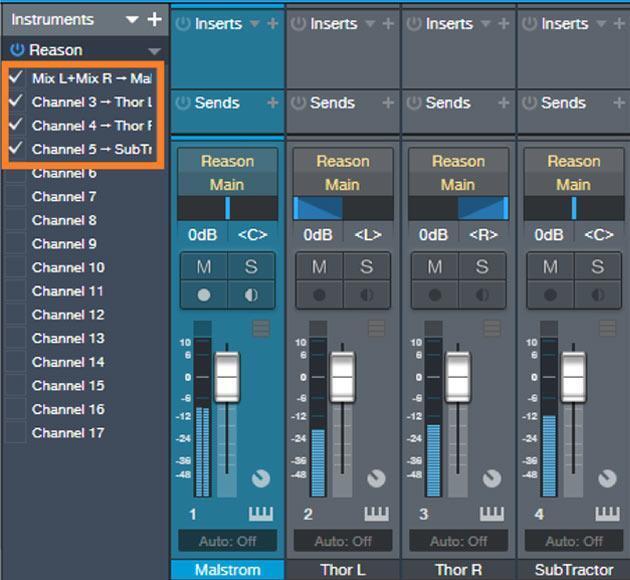
Figure 4: Cheque the channels in Studio One's Musical instrument panel for the channels yous want to have appear in the mixer.
Note 1: The only stereo channel that Reason exposes is MixL+MixR. You cannot, for example, accept channels 3 and 4 and transport them to a stereo mixer aqueduct in Studio I; Reason's outputs other than MixL+MixR are fundamentally mono. So in the mixer, you demand to pan the two mono channels (3 and 4) left and correct for stereo. I recommend naming the mixer channels to avoid confusion; because Studio One combined Reason Channels 1 and 2 into mixer channel 1, Studio One'due south Channel numbers volition be one less than Reason's channel numbers.
Note 2: When you bounce an instrument to sound or drag the Musical instrument track note data into an audio rails, this can indeed result in a stereo audio track. At that indicate, you can hide the Musical instrument tracks or delete them if you lot don't call back you'll use them once more.
Note 3: If you lot hear double-triggering with MIDI notes, plough off the Monitor function for the track on which you're recording.
| 3 | At present that you lot're set upward, record your tracks. Follow the same procedure as in the first instance — insert an instrument runway, send its output to Reason and the desired musical instrument, click on the instrument track in Reason'southward sequencer, and so start recording. This fourth dimension, though, don't transform the track to audio. |
If you eventually do desire to render these tracks to sound, I detect the almost efficient method is to right-click on the Note Events and choose Bounce Option or Bounce to New Track. This adds an sound track, creates an audio mixer channel, and mutes the original Annotation Events. You can unmute these later and redo the parts if you want to edit the parts farther.
Recording Sound from Reason into Studio One
This is a somewhat more complex ReWire chore: capture audio created past a sequence in a ReWire client. Suppose you've chosen upward the Redrum pulsate computer, which is very much like those Roland drum machines of yesteryear, and created sequenced drum patterns that you want to record into Studio I as audio. Here's how to practice it.
| 1 | In the Hardware Interface, patch Redrum'south left and right outs to a pair of Audio I/O channels (e.k., channels three and 4). This gives us a stereo out. Redrum also has individual drum outputs; using those is basically the same equally what we're doing, except you need to patch into more than Hardware Interface outputs and create more channels in Studio One. |
| ii | In Studio One's Instruments panel, bank check Channels iii and four (fig. 5, outlined in orange). Channels announced in the mixer for Reason'southward output. Retrieve to pan them left and right to create a stereo paradigm. |
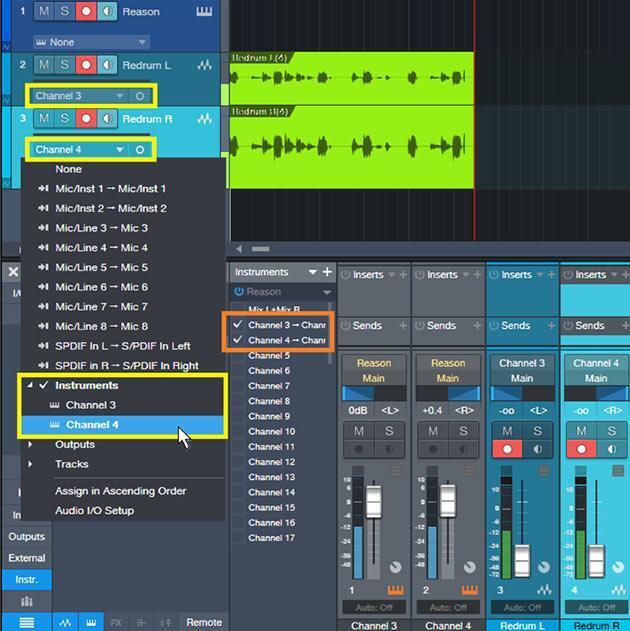
Figure v: Redrum's audio output goes to Reason interface channels 3 and 4. Tracks 2 and 3 tape this audio into Studio I.
| three | In Studio One's Arrange view, utilise the Add Tracks command to create two mono Audio Tracks for Reason outputs 3 and 4. Assign their inputs to Instruments > Channel 3 and Instruments > Channel 4 (also in fig. iv, outlined in yellow). Turn off the Monitor push button in the new tracks this created in Studio One's mixer, otherwise you'll hear the output that's being recorded, also equally the output from the virtual instrument. |
| four | Record-enable the tracks, and you can tape into them. Because the transports in a ReWire host or customer are synced, if you kickoff recording in Studio I, you'll record whatever Redrum is playing. |
After recording, yous tin mute the virtual instrument tracks or remove the Instrument rails altogether so that you need deal only with the audio outputs.
More than About ReWired Instruments
You lot'll be happy to know there's nothing yous actually demand to learn in terms of automation — recording automation for the Reason instruments works the same mode as recording automation for whatever virtual instrument. Just move the instrument knob or switch you lot want to control, then drag the manus down from Studio Ane's Control Link section (which will prove the parameter y'all selected) to either the rail for track automation or the Edit view'south Function for part automation.
Finally, don't forget that in addition to using insert furnishings in Studio One to procedure the musical instrument sounds, you can also patch Reason's processors between the instrument outputs and sound I/O.
And that'southward pretty much all you demand to know most how to ReWire Reason into Studio 1 — merely Reason is only i of many applications that can augment ReWire hosts. I think yous'll enjoy having an even bigger palette of potential sounds that integrates into the host like a super-plug-in!
Source: https://www.sweetwater.com/insync/how-to-use-rewire-in-studio-one/
0 Response to "How to Hear a Podcast Again on Eib Rush"
Post a Comment